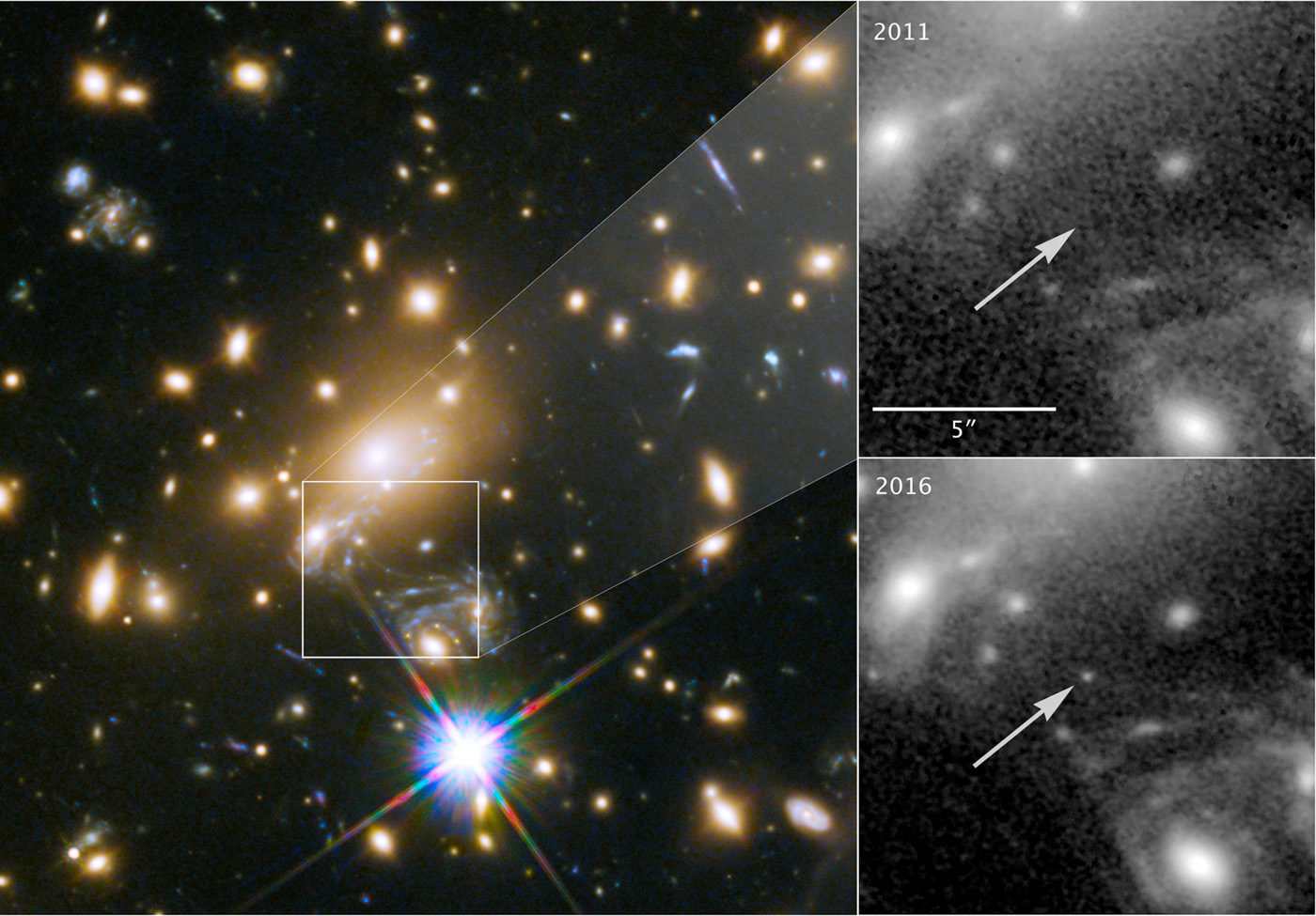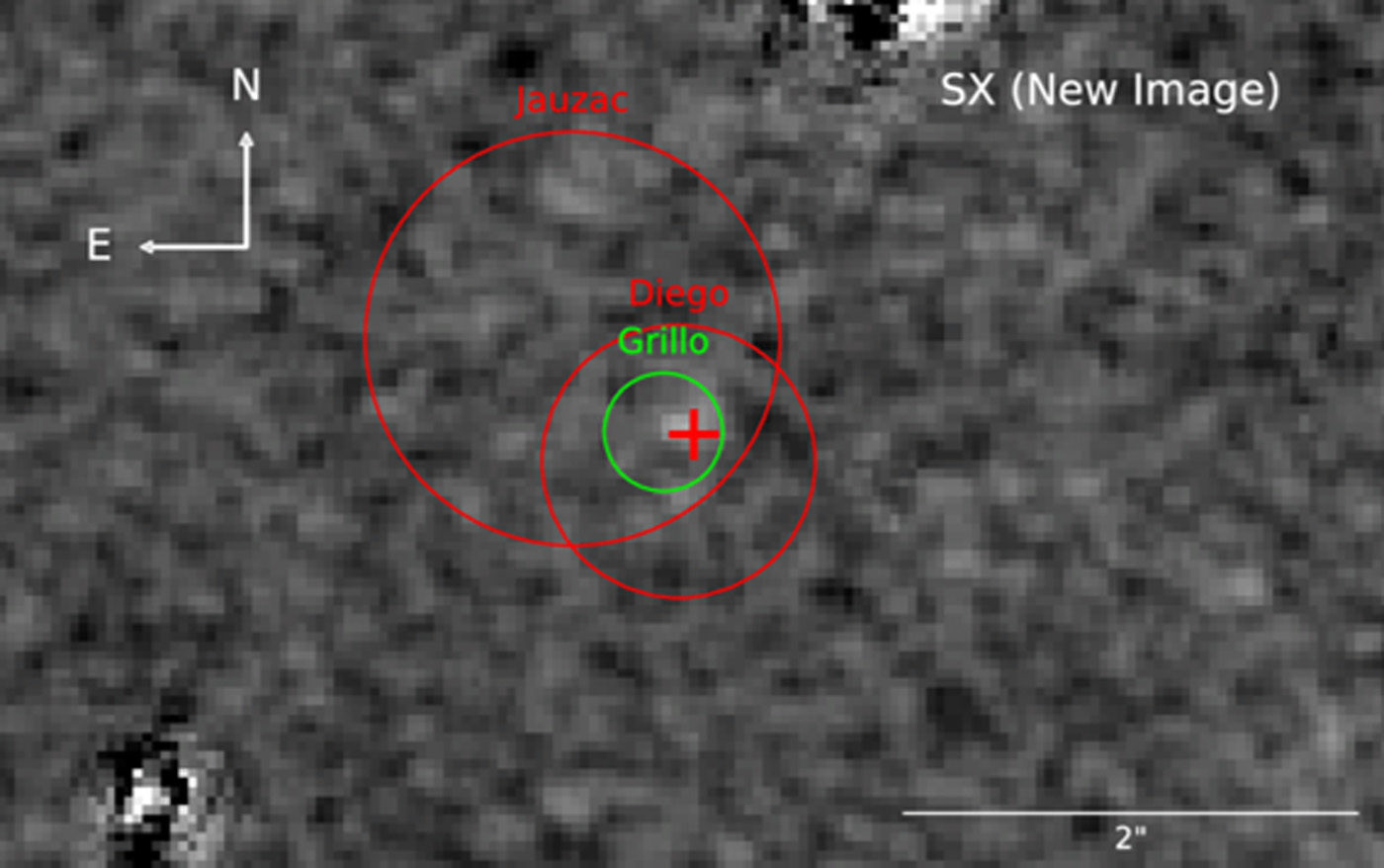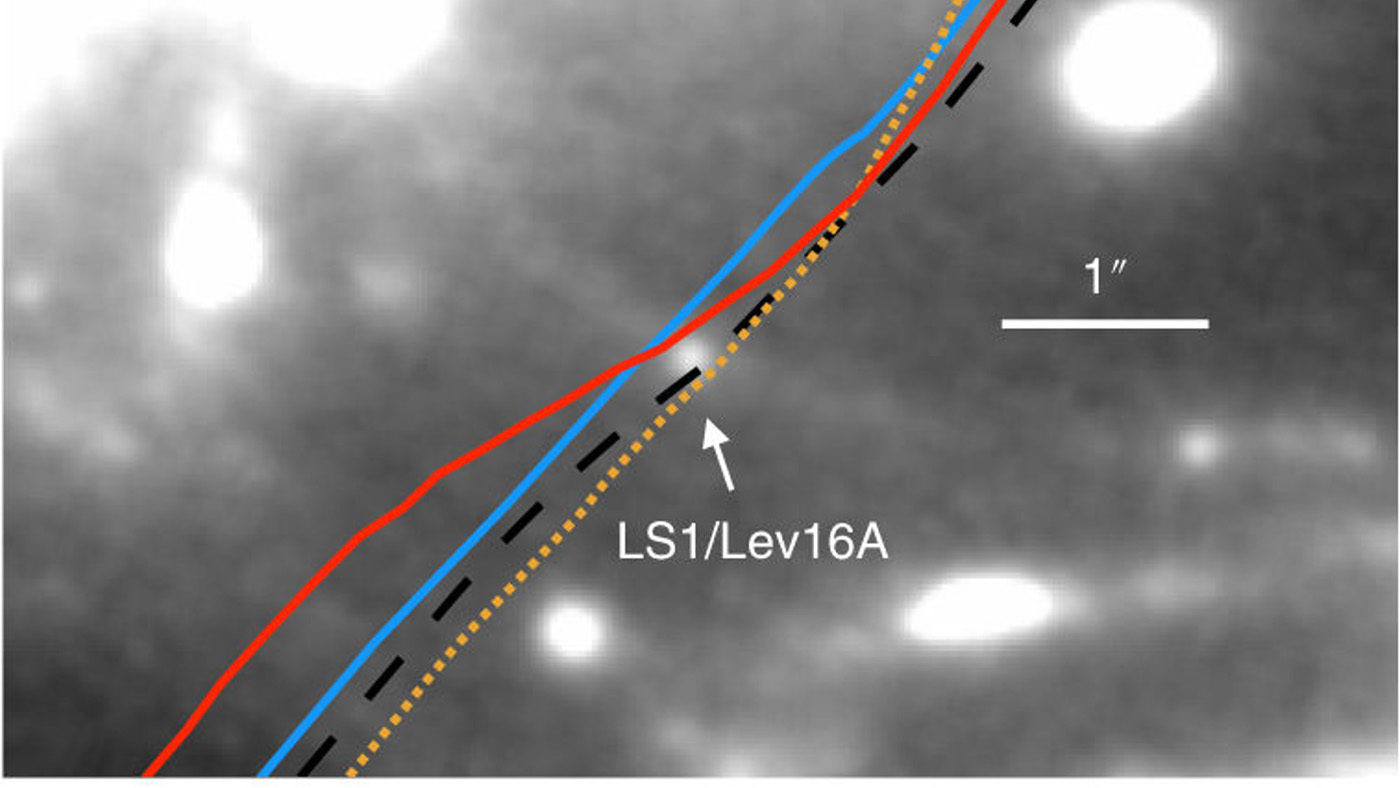May 20, 2018 8:50 pm
The Farthest Star Ever Seen — A Picture Worth a Thousand Words
How astronomers accidentally discovered a blue supergiant that’s been dead for 9 billion years.
Today’s guest blog post is by StarTalk intern Kirk Long. Kirk is majoring in astrophysics while minoring in applied mathematics and piano at Boise State University. He spends his summer weekends working at the largest public observatory in Idaho, the Bruneau Sand Dunes State Park Observatory, where he gives educational astronomy presentations and operates various large telescopes for the public. Kirk also helps run the StarTalk Snapchat (startalk-radio).
Author’s note: Whenever I hear or read about incredible discoveries like this my first instinct is to absorb everything I can and regurgitate my enthusiasm as a miniature novel, but that’s not always effective science communication, and the mini-novel has already been written as a scientific paper by the amazing scientists who discovered it. I’ve taken it as a challenge this time around to use less words in conveying my veneration of the cosmos to you, and it just so happens that I think 1,000 words may strike the right balance between information learned and time spent reading. And just for fun — in the spirit of the adage “a picture is worth a thousand words” — the body of this post (not including captions, this note, the intro blurb about me, or the citation) is exactly 1,000 words. I hope you enjoy, and let us know what you think of this format and whether it’s too dense or not dense enough.

This image (credit: NASA/Hubble, ESA, P. Kelly et al) shows Icarus’s host galaxy, which appears more than once because of the gravitational lensing of the galaxy cluster in front of it. You can see the newly discovered star “appear” in the 2016 image, where it was previously seemingly nonexistent. 5’’ (arcseconds) is about 0.0014⁰. For comparison, 150 arcseconds is about the same angular size as a grain of sand held out at arm’s length.
In a recent study published in the journal Nature, a team of scientists announced a startling and unexpected discovery — they found a star estimated to be 14 billion light years away that existed at a time when the universe was only about a third of its current age. The star they found (nicknamed Icarus) has characteristics most similar to those found in blue supergiant stars, which are massive, hot, and unstable. They have lifespans of only millions of years (short for a star — our sun has a lifespan of about 10 billion years) and are massive enough to explode in supernova explosions at the end of their lives, leaving behind ultra-dense neutron stars or black holes. They have surface temperatures higher than 10,000⁰ Kelvin (nearly double what our Sun’s temperature is) and they can be more than 100,000 times as luminous as our own star. Although blue stars like this are actually relatively rare (because they require a lot of stuff to make and they don’t live very long) they are so bright comparatively that many of the stars you see when you look up at night are these bright, blue stars. The best known example is perhaps the star Rigel — the brightest star in the constellation Orion and 7th brightest overall — which is about 20 times the mass of the sun yet puts out nearly 120,000 times as much light.
Although blue supergiants are impressive and bright, the universe is so mind-bogglingly big that even the brightest stars can’t be individually seen at distances billions of light years away. The apparent brightness of an object falls off to the square, meaning that something twice as far from an observer will appear four times as dim — you can see how this quickly becomes a problem at astronomical scales. The only time we can see the effects of individual stars at this scale is when they explode in spectacular supernovae and their luminosity can rival an entire galaxy. Icarus is far and away the most distant “normal” stellar system ever resolved, more than 250 times farther than its closest rival. The best part? It was discovered entirely by accident!
So how did they do it? Back in 2014 researchers observed a special supernova — in this case, the serendipitous nature of the cosmos had placed the galaxy where the exploding star was behind a cluster of massive galaxies, and those massive galaxies acted as a gravitational lens, bending the path that the light would take to reach our telescopes here on Earth. This phenomenon doesn’t result in just one lensed image — it distorts light along a variety of different paths, and thus you can end up with the illusion of seeing several different images of the same object in your field of view. When researchers first saw the supernova, they predicted that since this massive galaxy cluster did not have a uniformly distributed gravitational field, the light should follow paths of different lengths as it was bent towards us. One of the most fascinating facts about light is that it always travels the same speed — a mind-bending 300,000,000 m/s or 1,000,000,000 ft/s in the vacuum of space. Researchers used this fact — along with a lot of high-powered computer modelling — to trace out paths the light could take around the cluster, and predicted that some of the light travelling along a longer path still hadn’t reached us. This gave them an exciting chance to observe the same supernova twice (the first time this was done!), as well as a chance to blindly test our models applying Einstein’s work. Remarkably, the next year their predictions came true (and they were even accurate).

This view from an earlier paper from some of the same authors shows the reappearance of the supernova Refsdal. The circles overlaid are predictions of where the supernova should have been from three different models, with the best model in green. Credit: NASA/Hubble, P. Kelly et al.
But then the researchers noticed something else — a blip near the edge of the same galaxy containing that exploding star that had also grown massively in brightness, but it wasn’t a supernova. When astronomers looked at the spectrum of this mysterious object, they discovered that although its brightness was changing its temperature and composition weren’t. It didn’t have a spectrum that looked like any kind of supernova astronomers are familiar with, but it did have one remarkably similar to what a B-type blue supergiant star would have. While the supernova was observed using “just” the lensing provided by the galaxy cluster, to see Icarus required an exceedingly rare alignment of a second gravitational lens. Galaxy clusters and the gravitational lenses they create have been used to magnify and study galaxies before, but this technique has never been applied to a single star. Normally the observed magnification is around 50x, but there is a place along the edge of the gravitational lens — called the caustic or critical curve — where the magnification effect is much more pronounced and where Icarus just happens to be. As the lead author — Dr. Patrick Kelly — explained to me in an email, “galaxy clusters can only magnify galaxies by a factor of at most ~50, since galaxies are large and can’t ‘fit’ in the small region of high magnification. An individual star is much smaller than an entire galaxy, and its smaller size allows it to have a much greater magnification.”
Even with this added magnification (which Dr. Kelly estimated to be about 600x) Icarus still probably wouldn’t be bright enough to see, which is where the second lens comes into play. What the researchers think happened is this: a small but dense object in the lensing cluster (could be a star, neutron star, or black hole) was briefly aligned with that caustic area of greatest magnification, bending and focusing the light threefold and causing Icarus to be nearly 2000 times as bright as it otherwise would have been. This incredible brightening is what allowed them to spot Icarus and make this incredible accidental discovery.

This zoomed-in view shows where different models put the critical curve of the gravitational lens — where its magnifying power is most intense. Although different models produce slightly different curves, you can see that Icarus (LS1) lies pretty close to all of them. Credit: NASA/Hubble, P. Kelly et al.
To think that light from a long-dead star travelled for more than 9 billion years across the universe — and through some bizarre cosmic alignment it was briefly brightened enough for our quaint detectors to see it — is truly a wonderful embodiment of the cosmic perspective.
Citation: Kelly, P. L. et al. Extreme magnification of an individual star at redshift 1.5 by a galaxy-cluster lens. Nature Astronomy 2, 334-342 (2018). DOI: 10.1038/s41550-018-0430-3
Get the most out of StarTalk!
Ad-Free Audio Downloads
Ad-Free Video Episodes
Stickers & Mugs
Live Streams with Neil
Priority Cosmic Queries
Early-Access Videos
Learn the Meaning of Life
...and much more

 Become a Patron
Become a Patron

